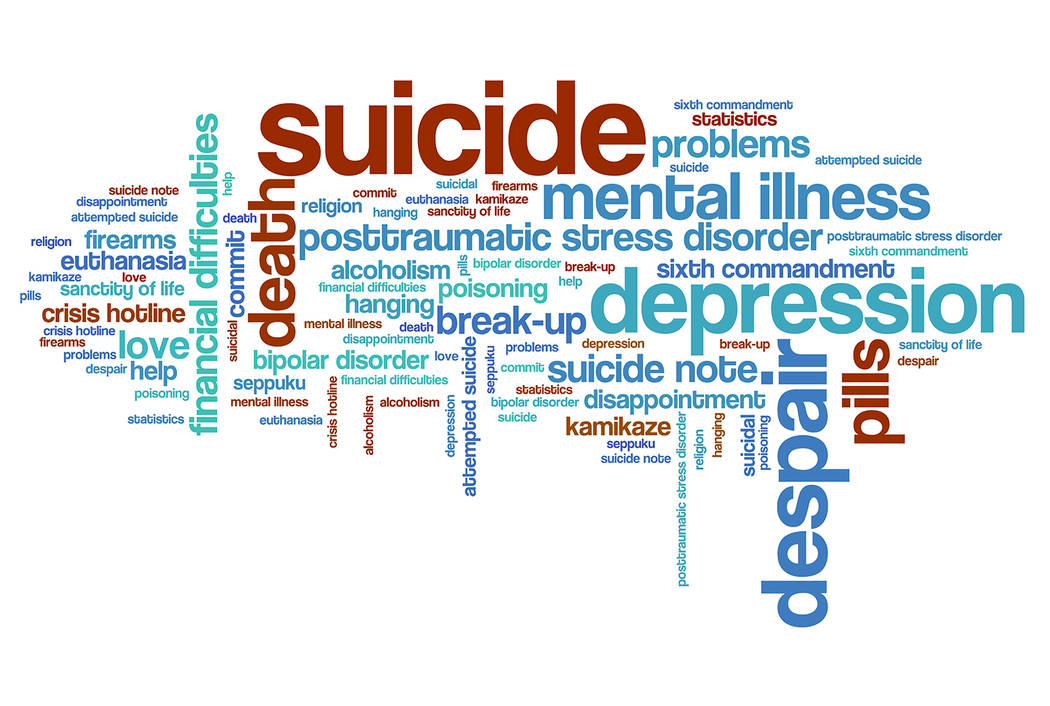Suicide prevention: Open and direct communication saves lives
Editor’s Note: This is part one in a series on suicide prevention and awareness. Details on the Safe Talk, Youth Mental Health and Adult Mental First Health courses, as well as other suicide and mental health resources in Nye County, will be presented in a future publication of the Pahrump Valley Times.
According to the National Institute for Mental Health, suicide is among the most prevalent causes of death in the U.S. With tens of thousands of people perishing from suicide each year, it is the 10th leading cause of death overall.
Perhaps more startling is the fact that for citizens ages 10 to 34, suicide was the second-leading cause of death in 2016. That same year, suicide claimed the lives of nearly 45,000 Americans, more than double the number of live lost from homicide and a rate of approximately 123 suicides per day, one every 11.7 minutes.
From 1999 to 2016, suicide rates have been on the rise nationwide, ticking upward by 28 percent from 10.5 to 13.4 suicides per 100,000 population. The statistics for males were highest, with men shown to have a four-times greater suicide rate than women at 21.3 per 100,000 compared to six per 100,000. Between the years 2008 and 2014, Nevada had one of the highest suicide rates, with 16.96 to 22.90 suicides per 100,000 residents.
Nevada may still rank fifth in the nation in terms of suicide but there is some good news to impart on that front. In the last reporting year, every single state in the U.S. saw its suicide rate increase, with the sole exception of the Silver State. The goal is to keep Nevada’s downward trend going and watch suicide rates drop each and every year, not just locally, but all across the country.
Many and varied factors can contribute to a person experiencing suicidal thoughts or actions, with each case situationally unique. Regardless of the why, however, one thing is certain; reaching out, offering a caring heart and ensuring whoever is in the grip of suicidal ideation knows they are not alone in their struggle, can make a huge difference.
Kim Johnson and Alicia Lewis are two of Nye County’s key players when it comes to local suicide prevention efforts. Johnson heads the NyE Communities Coalition’s Prevention and Wellness programs, including Safe Schools, Healthy Students, while Lewis is a licensed social worker working in the heart of Nye County’s schools.
Both are dedicated to promoting mental health with a large focus placed on suicide awareness. Each also holds certifications authorizing them to teach Safe Talk, Youth Mental First Aid and Adult Mental First Aid training courses, as well as certifications for Applied Suicide Intervention Skills Training. The number one thing for people to know, the two agreed, is that talking about suicide is the most effective measure a person can take to help prevent tragedy.
One of the largest obstacles for prevention is the lack of willingness to discuss the issue, Johnson and Lewis explained. Suicide is something of a “hush-hush” subject for many and this does nothing to help remedy the alarming statistics. Only a readiness to tackle the tough topic head-on can result in any improvement. Though many may believe they themselves cannot make a difference, the truth of the matter is that for every person maintaining vigilance against the scourge of suicide, more lives can be saved.
“There is, as you know, a stigma associated with mental health and obviously, stigma associated with the topic of suicide,” Johnson detailed in an interview in August. “And sometimes that stigma also directly relates to not wanting to talk about it, for fear of being judged or viewed in a way that may be derogatory.”
Johnson said that eradicating this concept was something he and Lewis always stress in the many courses they teach. “We talk about the fact that this is one of the reasons why we are doing this, to reduce the stigma with mental health issues and the topic of suicide. And what I have found out is, suicide has touched almost everybody’s life in some way or another,” Johnson said.
“When I teach classes, one of my first questions is, ‘How many of you know someone who has taken their life by suicide?’ Virtually all, over 90 percent of the people, raise their hands. And then I ask, ‘How many of you have had thoughts or attempts of your own?’ And I am starting to see more hands go up, more people willing to say so. Stigma still exists but I am seeing it slowly tick down.”
Lewis added her thoughts on the matter, comparing today’s taboo surrounding suicide with the stigma of discussing cancer 35 to 40 years ago.
“I remember as a kid people didn’t talk about cancer, because of the idea that if you talked about it, it was going to happen. It was ‘the big C’ and people didn’t really discuss it openly,” Lewis recalled. “Well look at where we are now. There’s the American Cancer Foundation, there are fundraising walks, there is Relay For Life, the Susan G. Komen walk for life, there are all these different activities that are not only raising funds for cancer but are also raising awareness and getting that prevention and intervention out there. That is exactly what we are doing here, breaking down that stigma and letting people know it is OK to have these conversations.”
There is no better method of prevention then talking about and educating oneself on suicide before tragedy strikes. Being proactive, rather than reactive, can have a big impact, with Johnson remarking that residents may not know someone at that moment who is dealing with suicidal tendencies but that could change in an instant. Preparation, knowing how to handle such situations, is one of the best weapons of defense for a community.
“One of the biggest things when we talk about suicide awareness and prevention, I think, is information, knowledge and education. And that is what these classes provide folks with,” Johnson said of Safe Talk and the mental first aid courses. “It gives them information, knowledge and education so they know what to look for, how to identify and then what to do about it.”
Johnson added that it can be frightening to talk to someone about suicide, with fears that saying the wrong thing might push that person even closer to the edge, often stemming any attempt.
Lewis agreed, stating, “That is one of the myths that we address in the Safe Talk course specifically. Talking about it, asking someone about it, is not going to make them have thoughts of suicide. They either have them or they don’t. But by having that direct and open conversation you are giving them the opportunity to feel within themselves that somebody cares and that it’s okay to talk about it. It opens up that door of communication.”
“The best way to prevent suicide it to talk about it. That’s the number one intervention tool,” Johnson reiterated with emphasis. “We need more of you, we need more of us. It takes a whole village to make communities suicide safe and mental health alert.”
Contact reporter Robin Hebrock at rhebrock@pvtimes.com
Walk In Memory, Walk For Hope
America is in the midst of National Suicide Prevention Week, which is being observed from Sunday, September 9 to Saturday, September 15. In Pahrump, Suicide Prevention Week will be capped off with the annual Walk in Memory, Walk For Hope event.
On September 15, the NyECC will team up with the Nevada Coalition for Suicide Prevention for this annual suicide awareness event, with the entire community invited to lend its support to this important cause. Registration is a $20 donation, which includes an event T-shirt. Registration begins at 7:30 a.m. with the opening ceremonies set for 8 a.m. and the walk scheduled to kick off at 8:30 a.m.
In addition to the walk to raise awareness and bring together those whose lives have been touched by suicide, there will be resources and information exhibits from 8 a.m. to noon.
The Walk in Memory, Walk For Hope event will take place at Petrack Park, 150 N. Highway 160 in Pahrump. For more information or for advanced participant registration visit www.nvsuicideprevention.org. Attendees may also register at the event. For any organization wishing to take part as an exhibitor, call NyE Communities Coalition Prevention and Wellness Director Kim Johnson at 775-727-9970 or email kim@nyecc.org



















